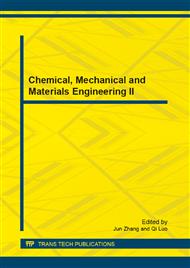p.337
p.343
p.351
p.356
p.362
p.369
p.373
p.378
p.385
The Segmentation Algorithm for Pavement Cracking Images Based on the Improved Fuzzy Clustering
Abstract:
The segmentation technology of pavement cracking image is critical for identifying, quantifying and classifying pavement cracks. An improved fuzzy clustering algorithm is introduced to segment pavement cracking images. The algorithm makes no assumptions the initial position of clusters. For each value of the multiscale parameter, it obtains a corresponding hard partition. The different partitions values of the multiscale parameter indicate the structure of the image in different partitional scales. The algorithm was tested on actual pavement cracking images. We compared the results with FCM and OTSU to show that the improved fuzzy clustering algorithm can provide better crack edges.
Info:
Periodical:
Pages:
362-366
Citation:
Online since:
May 2013
Authors:
Price:
Сopyright:
© 2013 Trans Tech Publications Ltd. All Rights Reserved
Share:
Citation:


